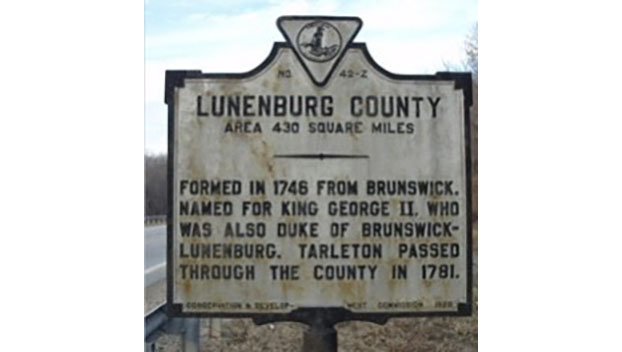Historical Society announces ‘Gateway Sign’ project
Published 10:15 am Thursday, May 4, 2023

- The Lunenburg County Historical Society is seeking additional funding to replace four deteriorating “Gateway Signs, like this one on Route 138, on the north side of the Meherrin River as one enters Lunenburg County. New signs will allow for more history about the county.
|
Getting your Trinity Audio player ready...
|
The Lunenburg County Historical Society wants to replace several “gateway signs” in the area. Right now, the focus is on several that cover primary roads marking the boundaries of Lunenburg County with its adjoining counties. These signs contain pertinent historical information about Lunenburg on one side and information about the adjacent county on the reverse side.
The Virginia Department of Transportation (VDOT) conducted a massive assessment of all the gateway markers in its right-of-way during 2022, and identified at least 200 that are so severely deteriorated or otherwise damaged that they can’t be refurbished—they will have to be replaced. Four of these signs are at Lunenburg County’s borders. However, state funds are not sufficient to cover the cost of replacing all of the state’s damaged gateway signs. Ultimately the old signs will have to be removed.
This is why the LCHS Board of Directors has recently approved funding by the society for Lunenburg’s share of replacement of these four gateway signs on entrances to the county. The Virginia Department of Historic Resources (DHR) has secured inter-county cooperation and cost sharing with Nottoway (sign on route 40), Charlotte (sign on route 40), and Mecklenburg (signs on route 49 and route 138) to pay half the cost of producing the side of a sign that displays their county’s text. LCHS will pay the remaining cost, as each sign will display Lunenburg’s text on the opposite side.
The following new historic text for Lunenburg County signs has been vetted by DHR and approved, following strict guidelines for the number of 100 words or 700 spaces.
“Lunenburg County, organized in 1746, was named for King George II, Duke of Brunswick-Lüneburg. Nine counties were later formed from this “Mother of Counties.” British Lt. Col. Banastre Tarleton raided here during the Revolutionary War, as did Union Brig. Gens. James H. Wilson and August V. Kautz during the Civil War. Tobacco was transported to auction on plank roads, and later railroads, making Kenbridge a major market town. Bright leaf tobacco was a staple throughout the 20th Century. After 1909, Victoria became a hub on the Virginian Railway, which transported coal from West Virginia to Tidewater. The 1827 courthouse in Lunenburg village reflects Thomas Jefferson’s architectural influence.”
The society hopes to see these new signs installed in 2023, despite a back log of several months due to the quantity of signs presently under revision and production. LCHS will provide updates as the project continues.
Society monies will cover much of the cost of these sign replacements, but fundraising has begun to cover the rest. If you wish to donate, make a check to LCHS and mail to Pat Israel, Treasurer, P.O. Box 974, Kenbridge, VA 23944.



